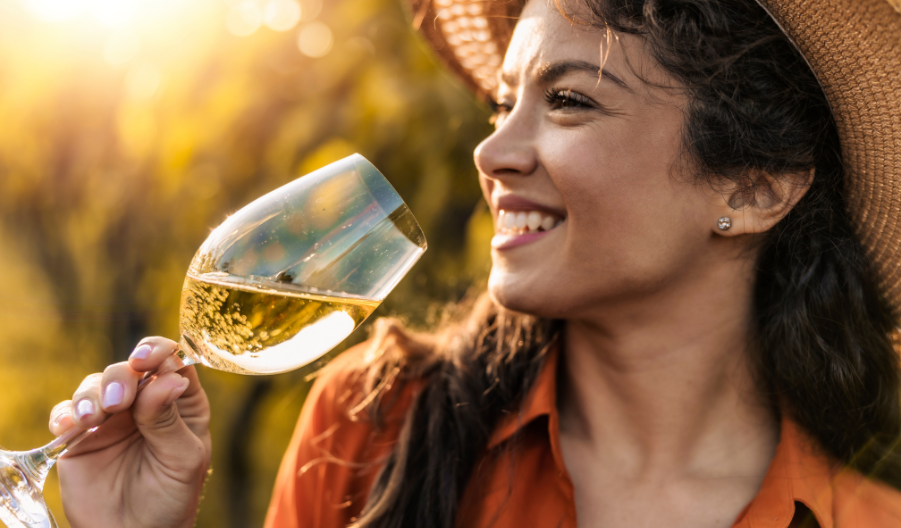Your customers aren’t just drinking differently—they’re thinking differently, especially those targeting Millennials and Gen Z. Understanding the evolving landscape of alcohol consumption is no longer optional. It’s essential.
This summer, everything from health trends to inflation is shaping how, when, and what guests order. Here's what to know—and how to respond.
Moderation Is Mainstream
Gone are the days when more was more. Today’s guests are drinking with intention, and moderation is leading the movement.
- 65% of Gen Z say they want to drink less in 2025—more than double the rate of Baby Boomers¹
- “Sober curious” interest remains high, with Google search trends peaking in 2021 and staying strong through 2024²
- The average number of drinks per capita has steadily declined for 18–34-year-olds over the past 20 years³
Here’s how to respond to these changing times:
- Add low-ABV and zero-proof cocktails to menus using brands like Seedlip, Lyre’s, or Ritual Zero Proof
- Call out health-forward ingredients like yuzu, cucumber, hibiscus, and adaptogens
- Highlight functional drinks for wellness-conscious guests
RTDs Are Reshaping the Experience
Ready-to-drink cocktails are no longer just for retail. RTDs are now the only BevAlc category gaining share, with growing appeal in casual, outdoor, and social settings.
While 46% of RTD consumption still happens at home⁴, Gen Z is leading the shift toward on-premise adoption. Offering chilled RTDs, frozen versions, or brunch-friendly flights adds speed and variety without extra prep—while helping boost margins.

Gen Z Is Rewriting the Playbook
Gen Z shows up for the experience, but not necessarily for a traditional drink menu.
- They under-index in beer and wine, but over-index in shots, tequila, and flavored canned drinks
- Their go-to categories in on-premise settings? Tequila, shots, and RTDs—especially at nightclubs and outdoor events
- Cannabis is becoming a viable alcohol alternative: 91% of older Gen Z substitute alcohol with cannabis at home at least once a month⁵
GLP-1 Medications Are Quietly Shifting Behavior
The rise of GLP-1 medications is already impacting dining habits—and drinking is no exception. As of 2025, nearly 17% of U.S. households include someone taking a GLP-1 medication⁶. These households represent 9% of BevAlc dollars but are now shopping and consuming alcohol less frequently⁷.
Among users without pre-existing health conditions, 52% say the medication reduces their alcohol intake⁸. That means smaller portions, slower consumption, and more interest in low-alc alternatives. Restaurants & bars can respond by offering smaller wine pours, half-size cocktails, or tasting menus that allow for flavor exploration without volume.
Final Pour: Serve What Guests Are Seeking
Success this summer means more than adding trendy drinks—it means aligning with how guests want to engage. Whether it’s a Gen Z group looking for shots and RTDs or a couple opting for zero-proof spritzes, SGWS has the portfolio and insights to help you serve smarter.
¹NCSOLUTIONS, SOBER CURIOUS NATIONAL ALCOHOL SURVEY, SAMPLE SIZE: OVER 1,000 PEOPLE AGED 21+, ²GOOGLE TRENDS, ³MORGAN STANLEY RESEARCH, BEVERAGES, DEMOGRAPHICS & DRINKING, ⁴DATASSENTIAL; CANNED & RTD BEVERAGES; ⁵COE - Consumption Deep Dive, ⁶NUMERATOR AND CORNELL STUDY, THE NO-HUNGER GAMES: HOW GLP-1 MEDICATION ADOPTION IS CHANGING CONSUMER FOOD PURCHASES,⁷NIELSEN MODERATION IMPACTS ON BEVERAGE ALCOHOL, ⁸EVERCORE ISI SURVEY, SAMPLE SIZE: 600 PARTICIPANTS

